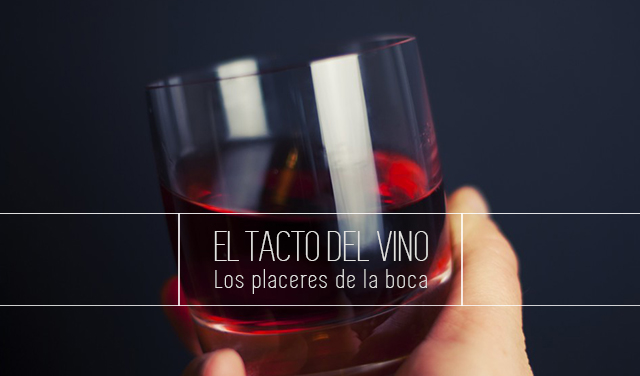THE TOUCH OF WINE

The art world marginalizes touch. Textiles flaunt their tactile delights, but wine conceals its pleasures in the mouth. Babies know this all too well: discovering the world begins by putting it in your mouth. Chewing on things is a way of identifying them.
The touch sensation of wine begins with its temperature, all the more crucial depending on the time of year. Drinking a white wine at a nicely chilled 9 degrees Celsius isn't the same as drinking it at 18. This would emphasize its acidity, and we'd perceive it as more alcoholic. However, we'd also pick up more of its aroma: while it's impossible to perceive the aromas of ice cream (we can't discern odorant molecules at under 4 degrees), we can really smell a hot soup, because the heat expands its fragrance.
Temperature is equally important in a red, especially for fans of “room temperature” (actually the temperature of a wine cellar), which means 16–18 degrees. A “room” or terrace in summer would be quite a different story! So don't be shy about asking for an ice bucket with cold water even when ordering a red. The more tannins a wine has, the warmer its serving temperature to downplay the astringency. Remember that pouring wine into a glass brings up the temperature by a couple of degrees. In his book, Papilles et Molecules (Taste Buds and Molecules, The Aromatic Science of Food and Wine), François Chartier, the Canadian expert in aromatic pairing harmonies, talks about foods that add freshness, like mint, and others, like certain spices, that generate heat. As temperatures rise, sparkling wines release more of their carbonic gas. The tickling on your tongue turns into bubbles. Knowing how to describe them provides us with clues about the winemaking process and their integration into the wine. The sensation that certain wines are heavier, denser, is noticeable when you swirl the glass and release their ripe fruit aromas, as well as in their ABV. Others are lighter, their midpalate shorter.
Tannins also influence the wine's evolution across the palate. And yes, what exactly are tannins? Have you ever experienced that dry mouth sensation, which gets you up in the middle of the night? Or the feeling of a wine that is so mouth-filling you could almost bite into it? Have you ever savored a really long finish? What about that feeling of your lips sticking to your gums? Or when your tongue goes all rough and sandpapery? Those are the tactile sensations of tannins. Tannins come from the grape itself as well as from the wood (in those wines that have been fermented and/or aged in wood).
Tannins are a bitter-flavored organic compound found in the skins, stems and seeds of the grape. White wines have lower tannins, because they undergo less skin contact.
Some wines are velvety, reminiscent of silk, like in that poem by Neruda, Ode to Wine, which closes with the following verse: “...wine as smooth as a golden sword, as soft as crushed velvet.” Others are suede-like and ruffle your tongue.
Let the wine caress your palate and fill you with its intoxicating kisses! Wine is closely related to sensual pleasure, and imbibing it well is part of the culture of eroticism. “After all, wine awakens our senses, calms the demands of reason and gives way to the desires of the heart,” as Giacomo Casanova wrote in Histoire de ma vie, praising the way wine caressed his mouth as “les plaisirs de bouche.”
Meritxell Falgueras
